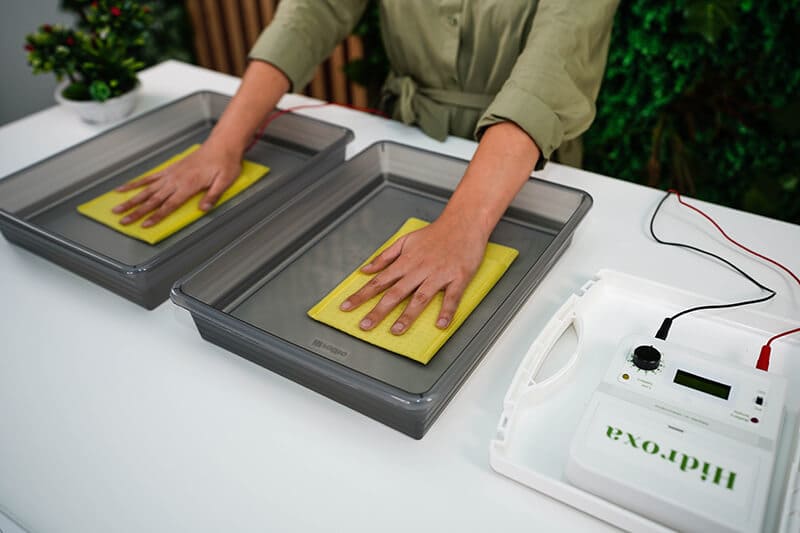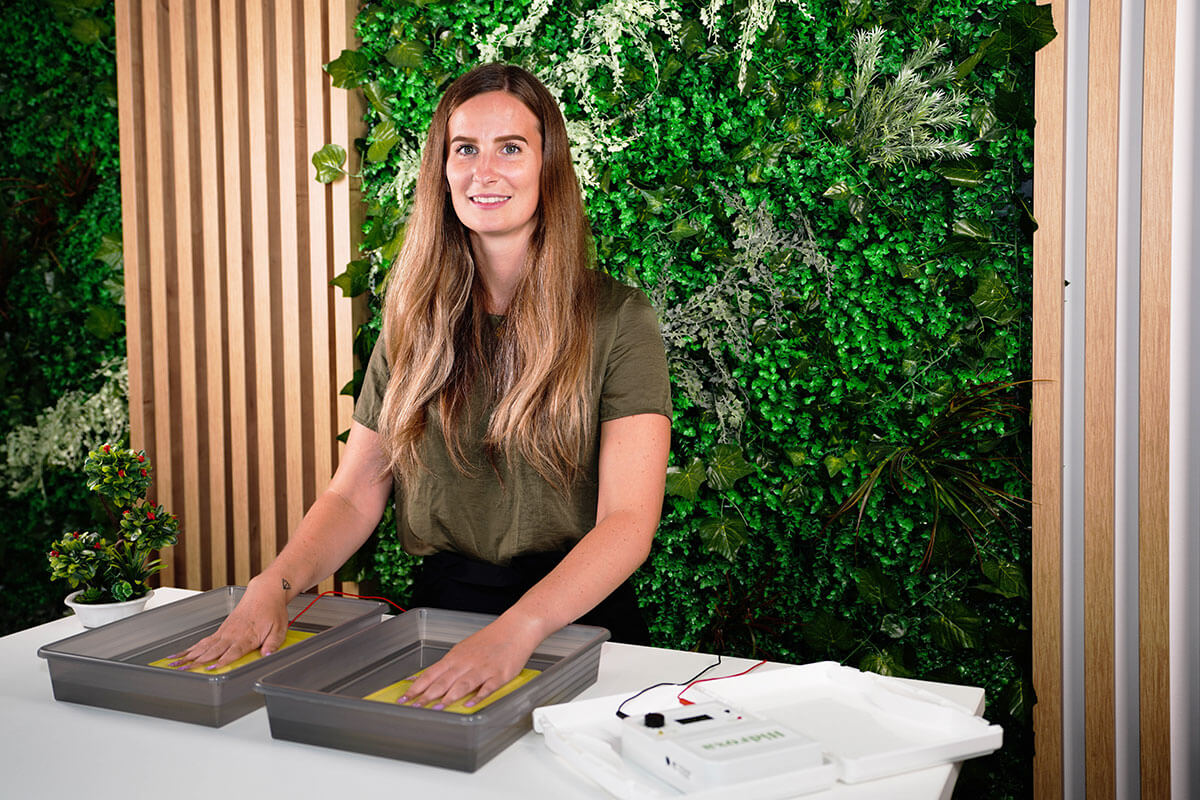Understanding sweaty palms and feet - causes
Are you tired of the constant discomfort and embarrassment caused by sweaty palms and feet? You're not alone. This condition, medically known as hyperhidrosis, affects millions worldwide, making everyday activities a challenge.
In this article, we delve into the sweaty palms and feet causes, shedding light on why this happens and how it affects those who struggle with excessive sweating. Our aim is to not only inform but also offer hope and solutions to manage this condition effectively.
Common causes of sweaty palms and feet
Excessive sweating in the palms and soles, known as palmoplantar hyperhidrosis, can have multiple causes. Let's take a closer look at the common reasons behind all that unwanted perspiration.
- Genetics plays a pivotal role in the saga of sweaty palms and feet. Like the color of our eyes or the shape of our nose, the tendency towards hyperhidrosis is often inherited, passed down through generations like a silent whisper. This hereditary condition serves as a reminder of our deep-seated connections to our ancestry, manifesting in the sweat that beads on our skin.
- Stress and anxiety, the twin sentinels of our emotional well-being, also exert a significant influence on sweating. This is controlled by the limbic system in our brains. In moments of heightened emotion, our bodies react in a cascade of responses, one of which is increased sweating. This physiological reaction is deeply rooted in our fight-or-flight response, serving as a barometer for our inner emotional storms. The sweat that forms on our palms and feet in these moments is a testament to the power of our emotions to manifest physically. Wet palms allow a better grip to be able to climb or escape an enemy. But hyperhidrosis of the palms and feet will give bad grip so even there, the hyperhidrosis does not act to one's benefit.
- Medical conditions further complicate the landscape of sweaty palms and feet. Disorders such as diabetes, thyroid imbalances, and various infections can amplify the body's propensity to sweat. These conditions often act stealthily, influencing the body's regulatory systems and tipping the scales towards excessive sweating. It's a reminder of the intricate dance between health and bodily functions, where a misstep can lead to unforeseen consequences. This kind of hyperhidrosis is called secondary hyperhidrosis. Secondary hyperhidrosis is most often generalized and not localized to the hands and feet.
- Lifestyle factors such as diet and physical activity levels offer another layer of influence. The foods we consume and our engagement in physical exercise can both mitigate and exacerbate sweating. Spicy foods, caffeine, and alcohol can trigger sweat glands, while regular physical activity might help regulate body temperature and reduce stress-related sweating. It underscores the importance of mindful living and the choices we make daily, shaping not only our health but also the comfort of our interactions with the world.
Each of these factors acts as a piece in the puzzle of sweaty palms and feet, influencing the frequency and intensity of sweating episodes experienced by individuals. Understanding these common causes provides a solid foundation for devising effective strategies to manage and alleviate the discomfort associated with hyperhidrosis.

When does the problem of sweaty hands and feet typically arise?
Palmoplantar hyperhidrosis typically begins during childhood or early adolescence. This is a time when hormone levels fluctuate, leading to increased perspiration in certain individuals. However, some people may experience this issue much more extreme than others. Regardless of when it first appears, hyperhidrosis can be a source of embarrassment and discomfort for those affected. As such, it is important to understand the causes and potential treatments for this common condition.
Recognizing symptoms of hyperhidrosis in children
Hyperhidrosis in children can be identified by several noticeable symptoms. The most prominent sign of hyperhidrosis is excessively sweaty palms and feet, even when the child is not feeling hot or anxious. This excessive sweating may also occur on other areas of the body, such as the underarms or face. Alongside the physical symptoms, children with hyperhidrosis may also experience emotional distress, such as embarrassment or frustration, due to their condition. Additionally, they may exhibit social withdrawal or avoidance of activities that may exacerbate their sweating. Other symptoms to look out for include skin infections or irritation caused by the constant dampness of the skin. If your child is experiencing these symptoms, it may be an indication of hyperhidrosis and seeking medical attention is recommended.
How is hyperhidrosis diagnosed?
Diagnosing hyperhidrosis involves several steps to determine the cause of excessive sweating in the palms and feet. Firstly, a medical history is taken, including any family history of hyperhidrosis, as genetics can play a role in the condition. Next, a physical exam is performed to assess the areas of excessive sweating and to rule out any underlying medical conditions. In some cases, a starch-iodine test may be conducted, where iodine solution is applied to the sweaty areas and then starch is sprinkled over the skin. The areas that turn dark blue indicate excessive sweating. Additionally, a test called the paper test may also be used, which involves weighing special paper before and after it is placed on the sweaty skin to measure the amount of sweat produced. These methods help doctors to accurately diagnose hyperhidrosis and develop an effective treatment plan.

Sweaty palms and feet: exploring effective treatment solutions
There are several treatments available for sweaty hands and feet, ranging from over-the-counter antiperspirants to prescription medications. Antiperspirants containing aluminum chloride are commonly used to reduce sweat production in the palms and soles of the feet. For more severe cases, medications such as anticholinergics or Botulinumtoxin injections may be prescribed to block the nerve signals that trigger sweating. Other options include iontophoresis, a procedure that uses a mild electric current to temporarily block sweat glands, and even surgical interventions such as sympathectomy or microwave thermolysis. It's important to consult with a healthcare professional to determine the best treatment approach based on the severity of symptoms.
7 tips for managing sweaty palms and feet
Managing sweaty palms and feet can be a challenging and embarrassing issue for many people. Fortunately, there are several coping tips that can help individuals deal with this problem.
Here are 7 tips that can help:
- Use antiperspirants: Apply antiperspirant designed for hands and feet before bed. These products contain aluminum chloride, which helps to block sweat ducts. There are over-the-counter options as well as prescription-strength formulas if needed.
- Wear breathable footwear and socks: Choose shoes made of natural materials like leather or canvas that allow your feet to breathe. For socks, opt for moisture-wicking materials such as bamboo, wool, or special synthetic blends designed to keep moisture away from your skin.
- Wear socks. Many with hyperhidrosis experience less sweating on their feet and in general when they wear socks.
- Manage stress: Stress and anxiety can trigger sweating. Practices like yoga, meditation, deep-breathing exercises, or any stress-reducing activities can help keep your nerves calm and reduce sweating.
- Dietary adjustments: Certain foods and drinks can trigger sweating. Caffeine and spicy foods are common culprits. Reducing intake of these can help manage symptoms.
- Absorbent foot powders: Using absorbent powders on your feet can help keep them dry and reduce odor. Talcum powder or cornstarch-based powders are good options.
- Maintain good hygiene: Regularly wash your hands and feet with soap. This helps to remove bacteria.
If self-care measures aren’t effective, it might be time to consult a healthcare provider. They can offer treatments such as prescription antiperspirants, injections, oral medications, or even surgery for severe cases.
Iontophoresis: an effective treatment for Hyperhidrosis
Iontophoresis is a revolutionary treatment for hyperhidrosis, a condition characterized by excessive sweating. This treatment works by using a small electrical current to deliver medication or minerals, like antiperspirants, through the skin. When the electrical current is applied, it helps to block the sweat glands, reducing the amount of sweat produced. The process typically involves placing the affected areas, such as the palms or feet, in a shallow tray of water, while a gentle electrical current is passed through the water. This treatment is considered safe and effective for managing excessive sweating and can provide long-term relief for those suffering from hyperhidrosis.
When to see a doctor
While lifestyle adjustments can alleviate some symptoms, it's vital to recognize when professional intervention is necessary. Signs such as persistent sweating despite lifestyle changes, sweating disrupting daily activities, or accompanying symptoms like fever or weight loss warrant medical attention. Seeking help early can prevent complications, exclude underlying causes of the sweating and improve quality of life. Remember, you don't have to suffer alone; medical professionals are equipped to provide support and guidance.
FAQ section
While there is no definitive cure, several treatments can manage symptoms. These range from antiperspirants and medications to more advanced options like iontophoresis (a treatment that uses electrical currents to temporarily stop sweat glands) and B. toxin injections.
Hyperhidrosis is more common than many people realize, affecting approximately 1-3% of the global population. While it may not always be openly discussed, it's a widespread condition that can significantly impact individuals' daily lives.
Yes, hyperhidrosis can affect individuals of all ages, including children and teenagers. While it can be distressing for young people to experience excessive sweating, there are treatment options available to help manage symptoms and improve their quality of life.
Yes, while sweaty palms and feet are the most common areas affected by hyperhidrosis, the condition can also manifest in other areas such as the underarms, face, or groin. This condition, known as focal hyperhidrosis, can occur in multiple areas simultaneously or independently.
It's essential to seek out a healthcare provider who has experience and expertise in diagnosing and treating hyperhidrosis. Dermatologists, neurologists, and primary care physicians with a special interest in hyperhidrosis are good places to start. Additionally, organizations like the International Hyperhidrosis Society provide resources and directories to help individuals find healthcare providers knowledgeable about hyperhidrosis management.
Absolutely. Since emotional stress can trigger sweating, techniques like yoga, meditation, and deep breathing exercises can help manage stress and reduce symptoms. This can reduce the sweating but cure the hyperhidrosis.
Conclusion
Armed with knowledge and support, managing this condition becomes achievable. We urge you to implement the tips provided, consult with medical experts, and consider joining support groups to share experiences and solutions. You're not alone on this journey; together, we can navigate towards comfort and confidence.